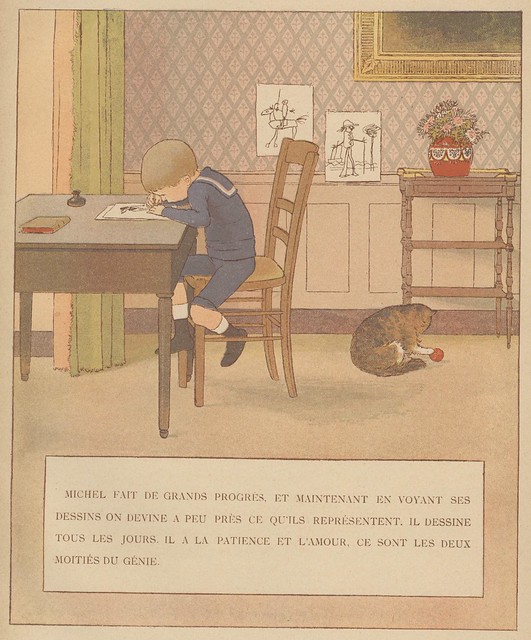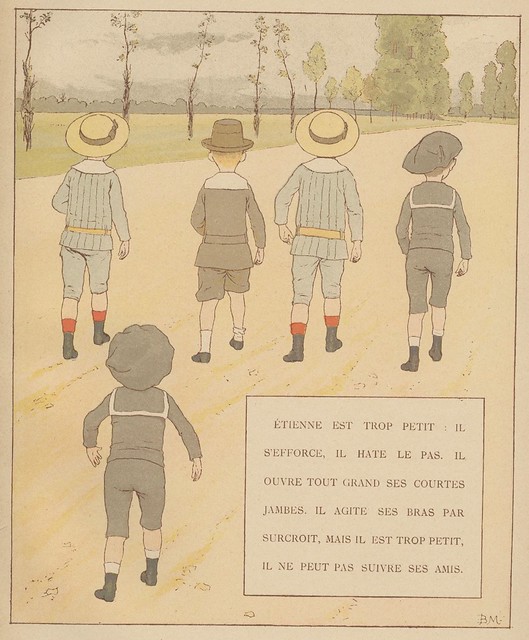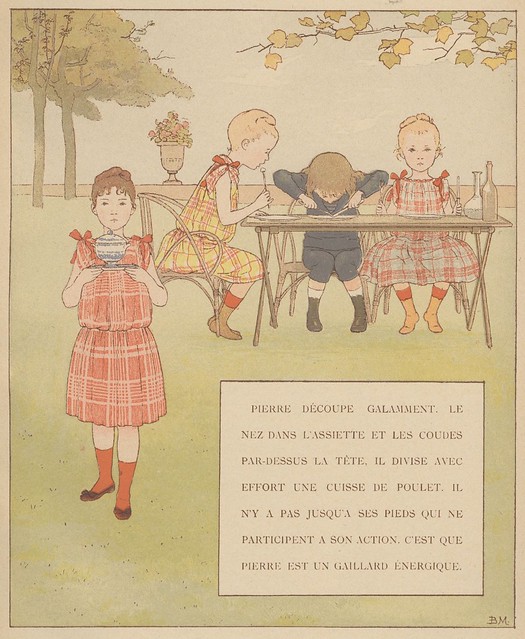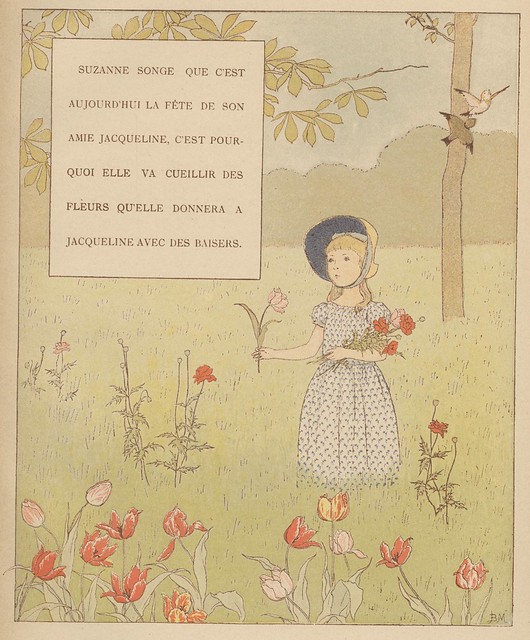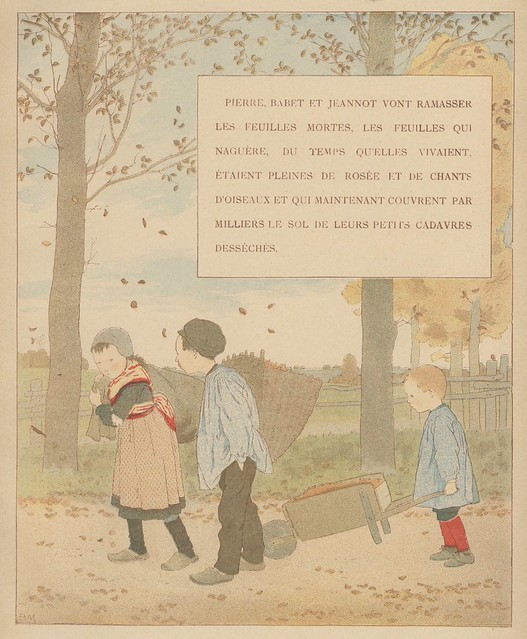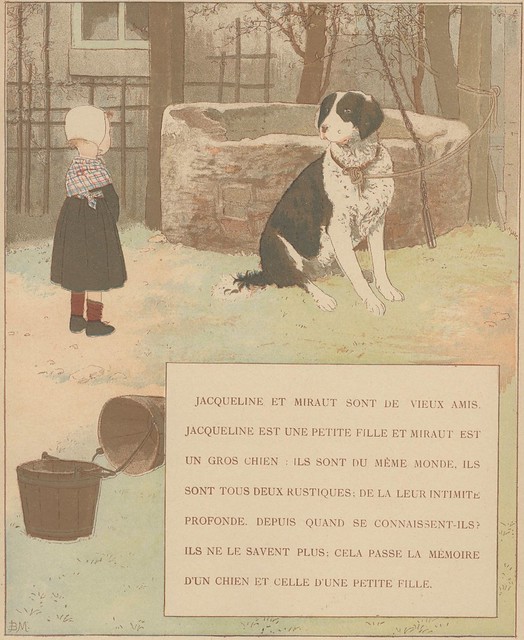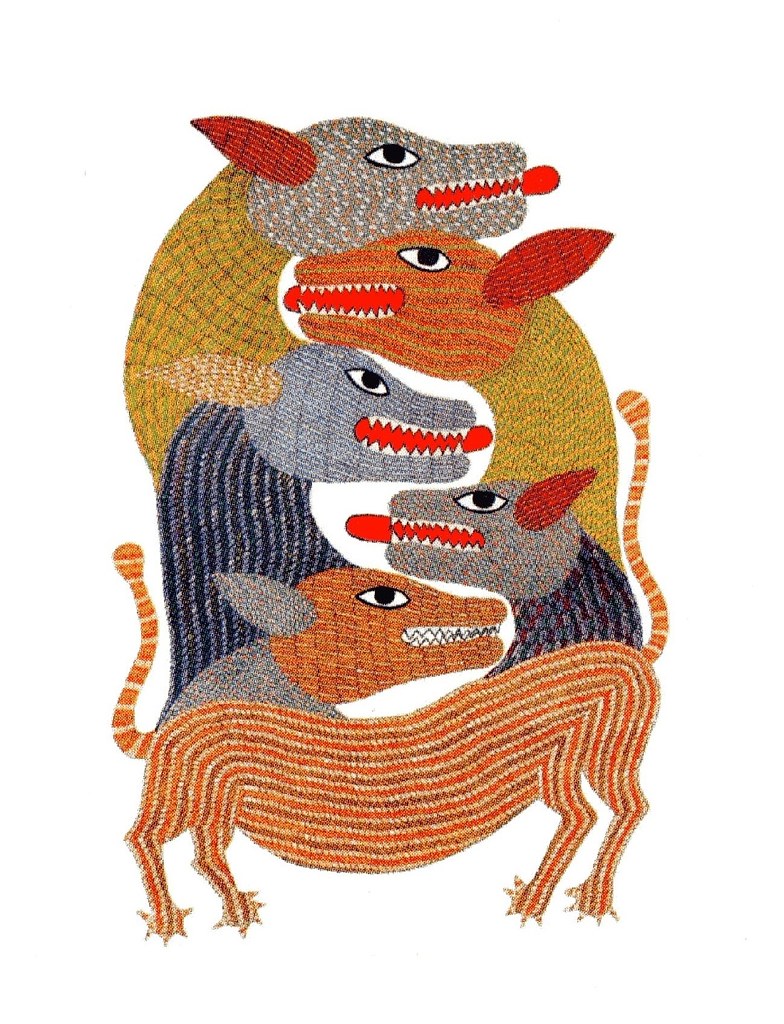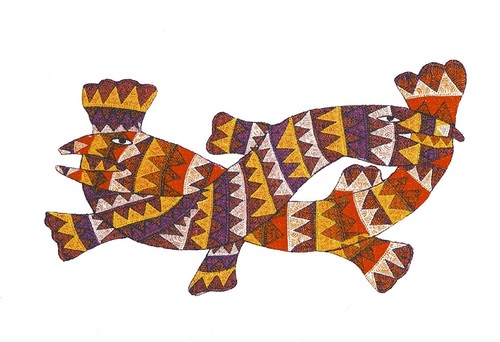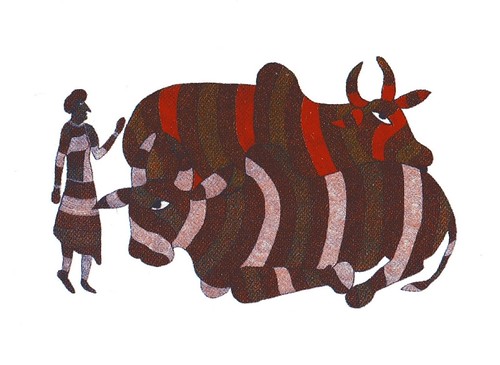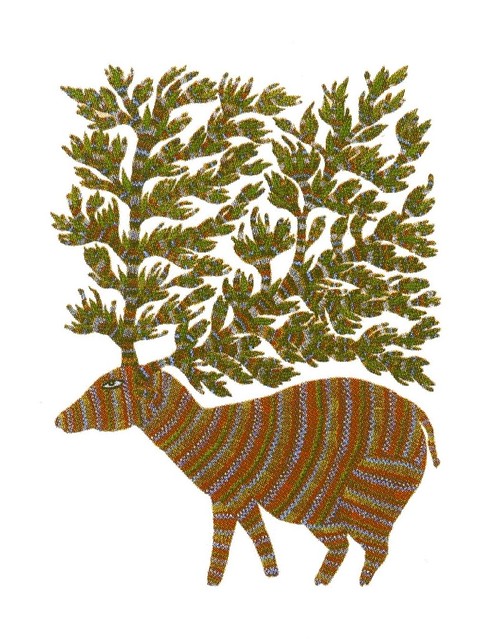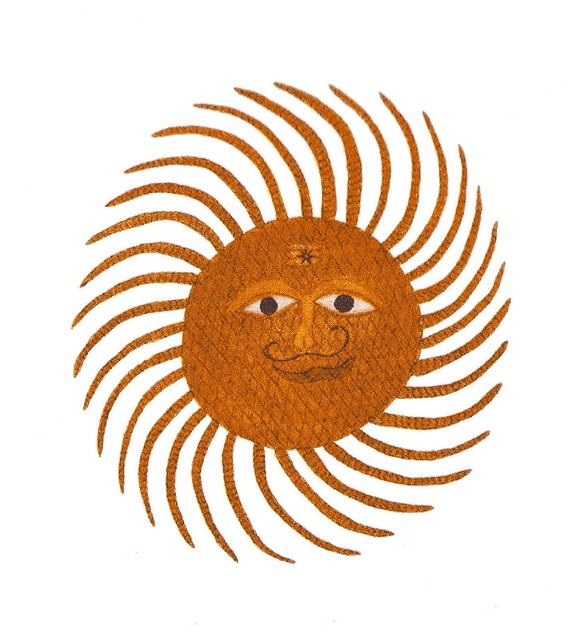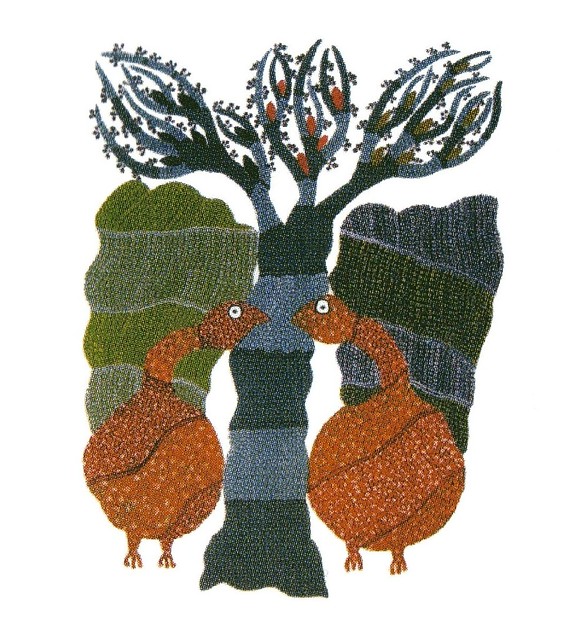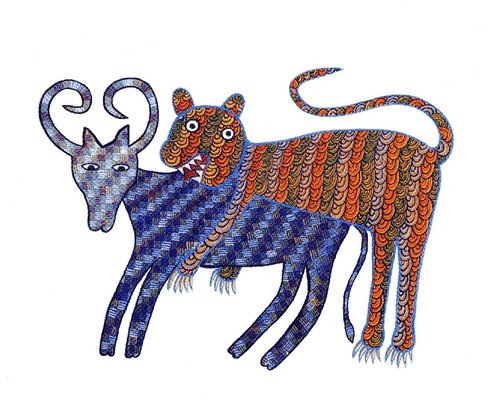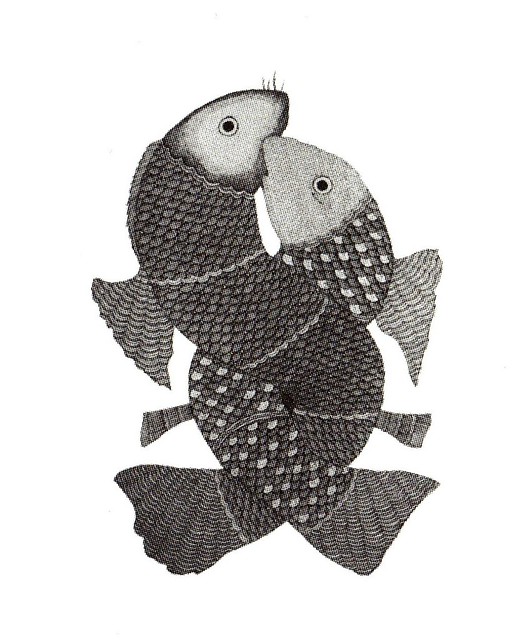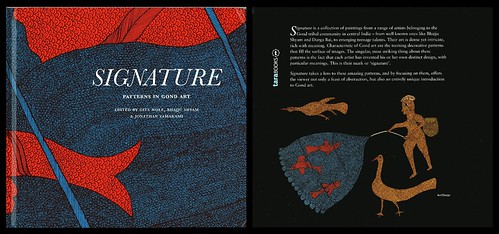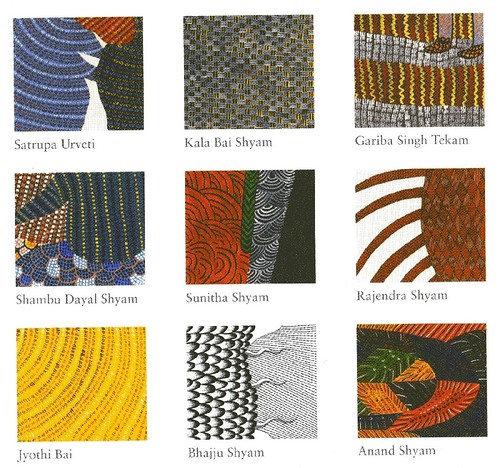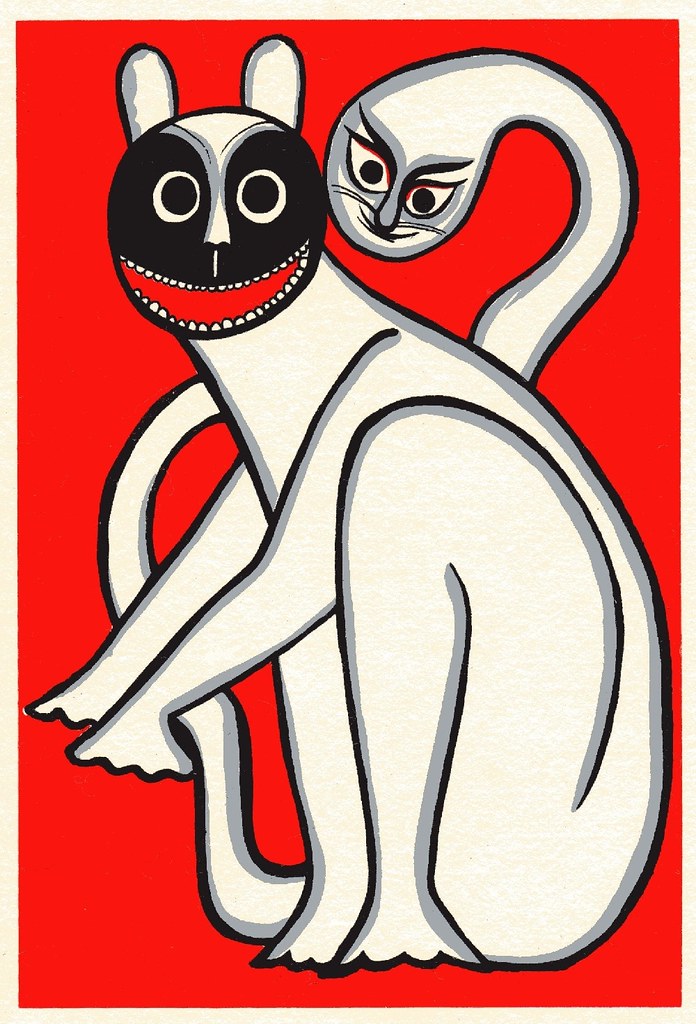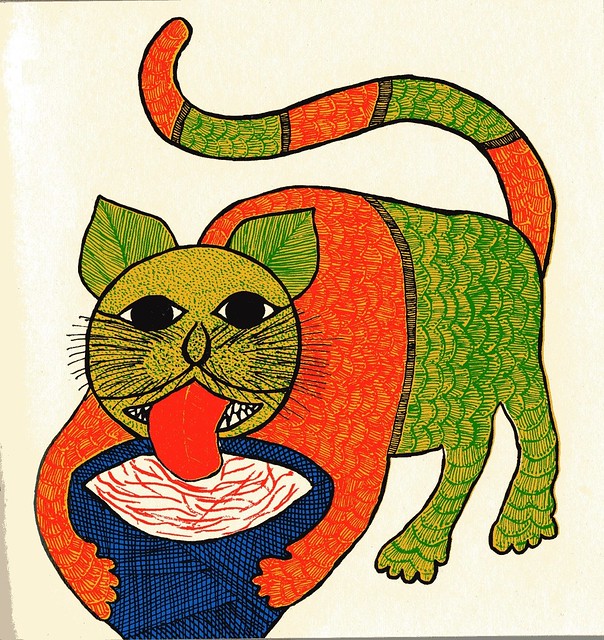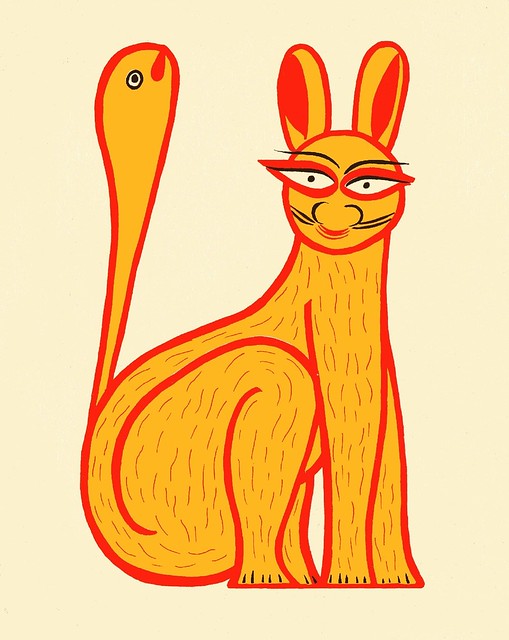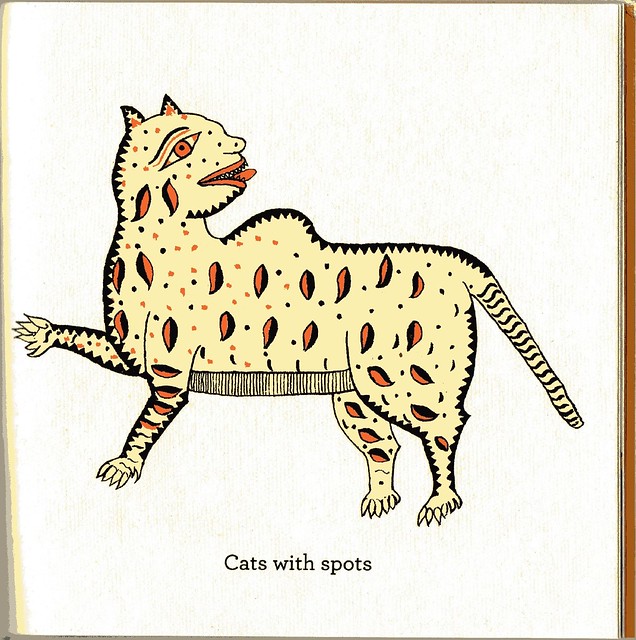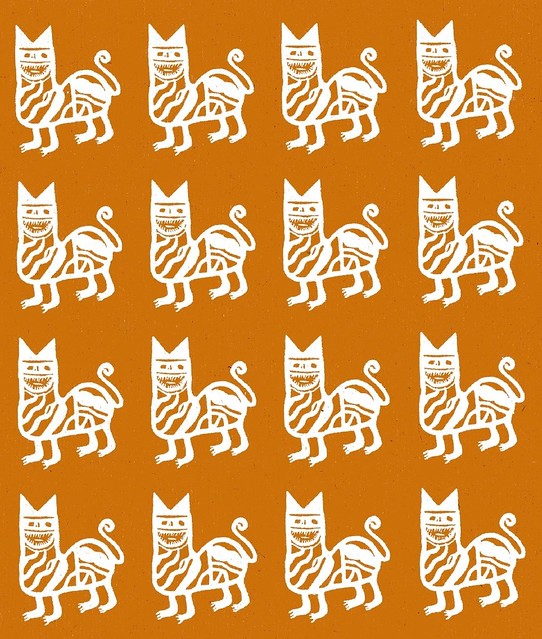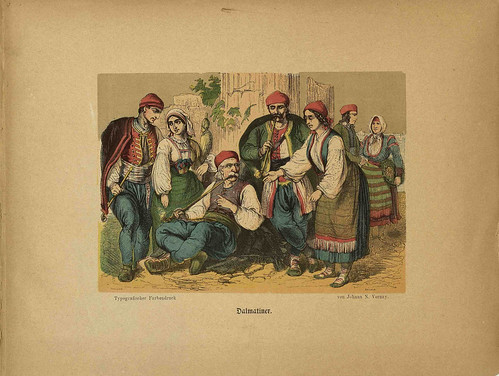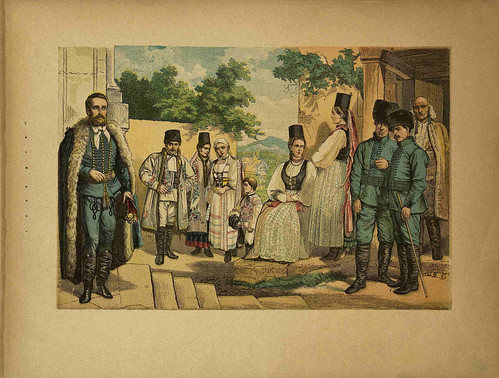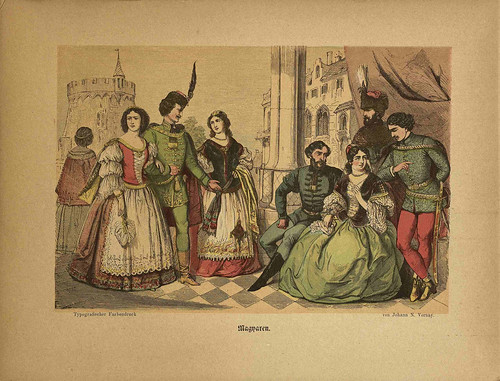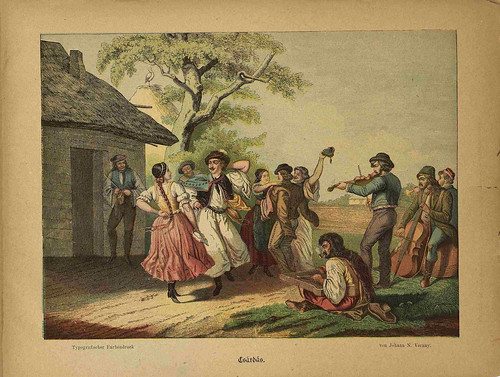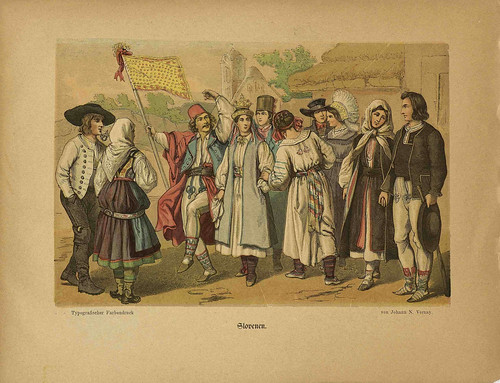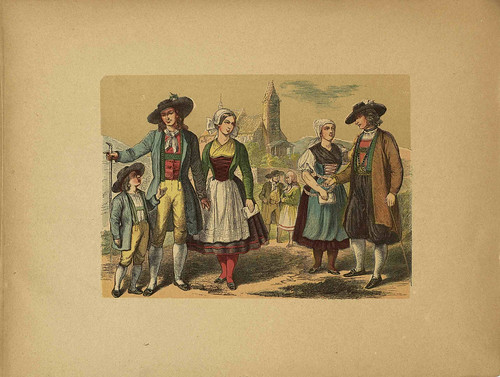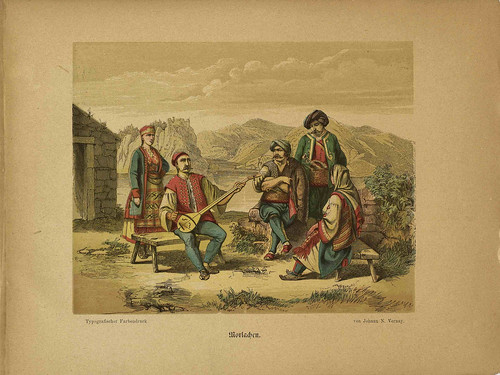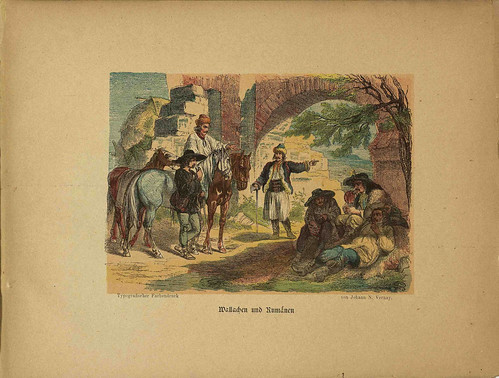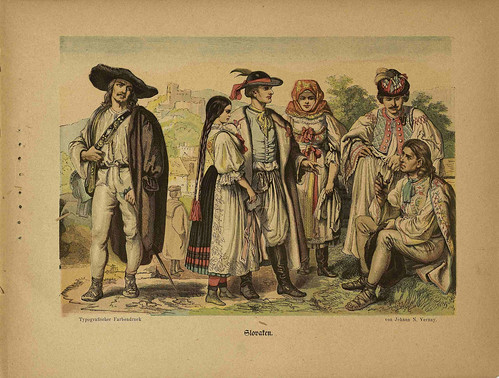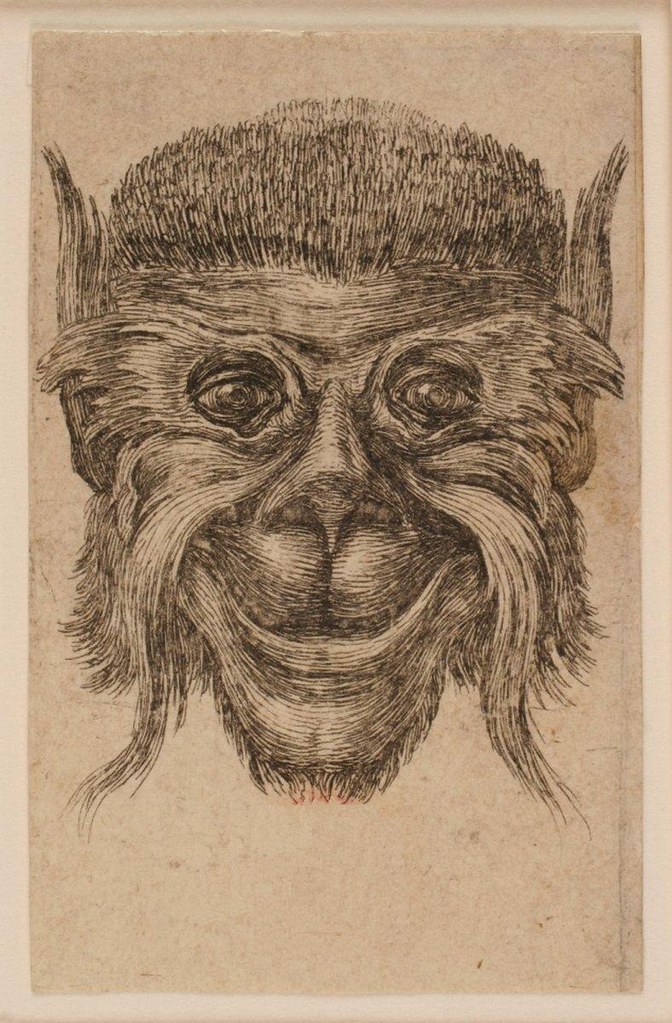
Tête de singe souriant
[Smiling monkey's head]
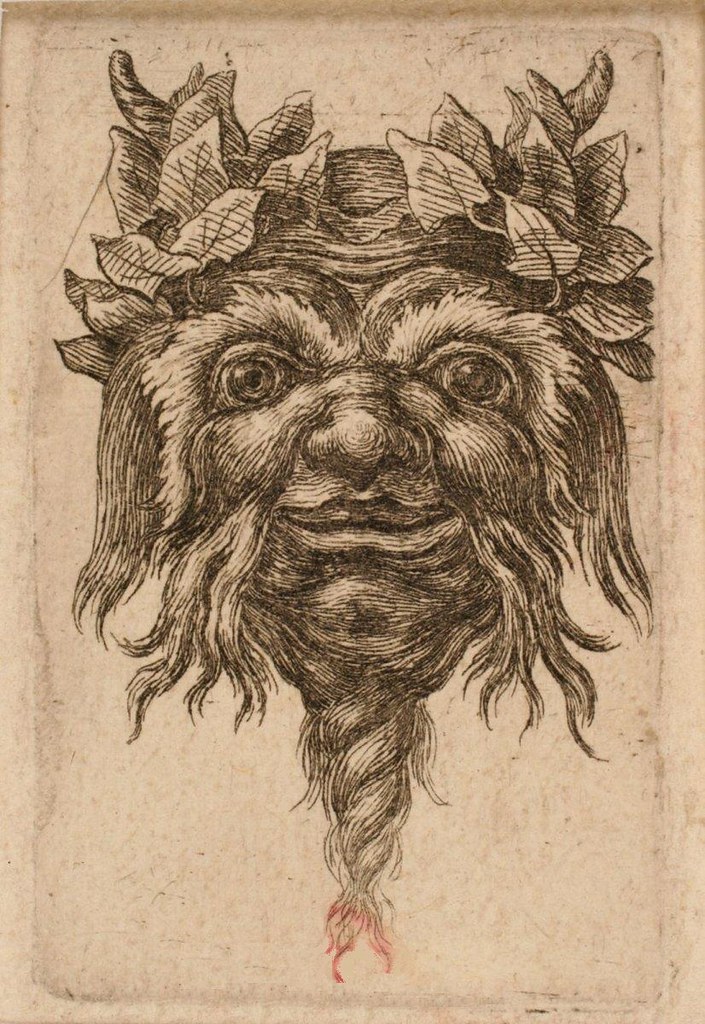
Tête d'un satyre souriant
[Smiling satyr's head]
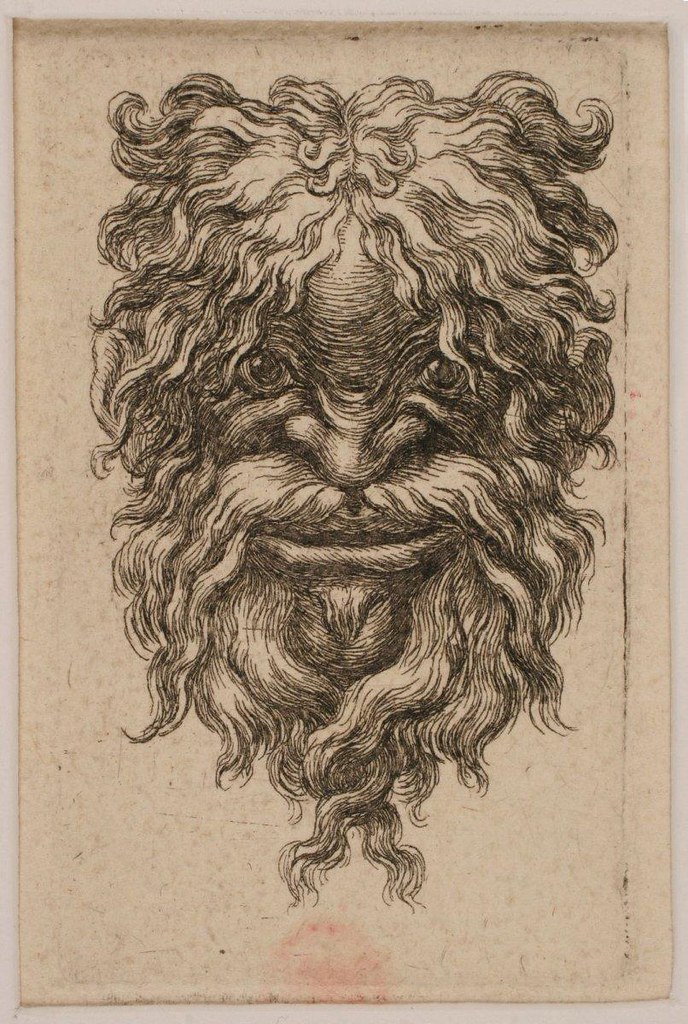
Tête chevelue et barbue d'un vieillard souriant
[Shaggy, bearded head of a smiling old man]

Tête de singe à la moustache enrubannée
[Monkey's head with ribboned moustache]

Tête d'un satyre aux sourcils levés
[Satyr's head with raised eyebrows]

Tête de faune aux rubans
Ribboned head of faunus
*(or maybe it's just 'creature')
Tête d'un satyre aux cornes nouées
[Satyr's head with tied horns]
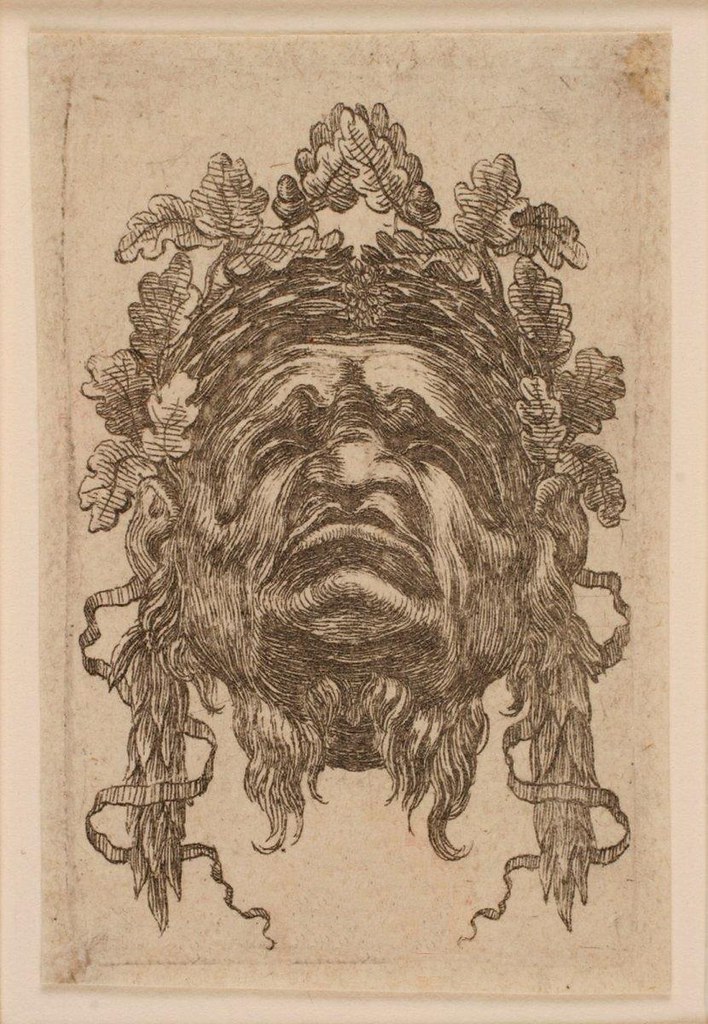
Masque feuillagé d'homme grimaçant
[grimacing masked man with foliage]

Tête de satyre à la guirlande
[Satyr with head garland]
(click through for enlarged versions; some of the library stamps have been removed or attenuated)
This striking set of hirsute heads was produced in the second half of the 17th century by a French engraver named François Chauveau. It's as though he has travelled forward in time to select elements from Chewbacca / Planet of the Apes & Star Trek (Worf) to combine with the motif popularised during the Renaissance, the grotesque. So there's a certain charming naivety and abstraction to the works suggesting they may be early versions for a later, more sophisticated, suite of prints perhaps. We don't know the designer so it's hard to say.
Chauveau was a renowned engraver with royal pension and favour among his peers. A selection of more than a hundred and fifty of his prints, covering a wide variety of themes, is available from the
Joconde portal, on behalf of a number of contributing French institutions.
Previously (that I can remember offhand) -


